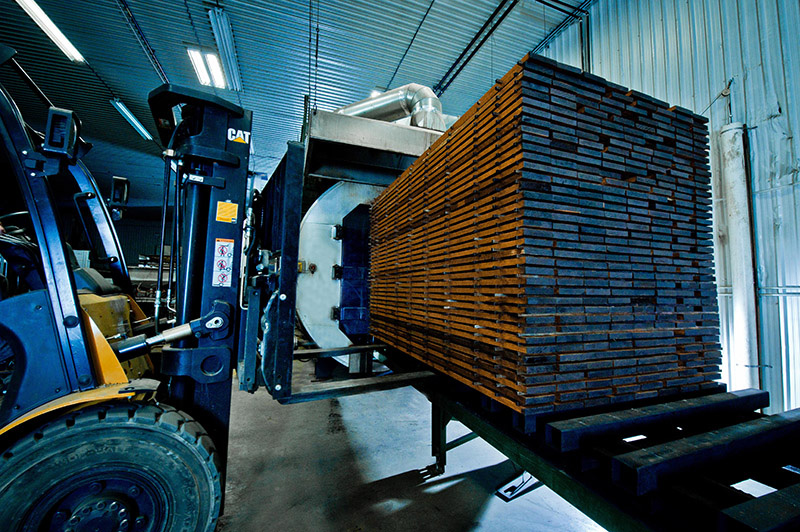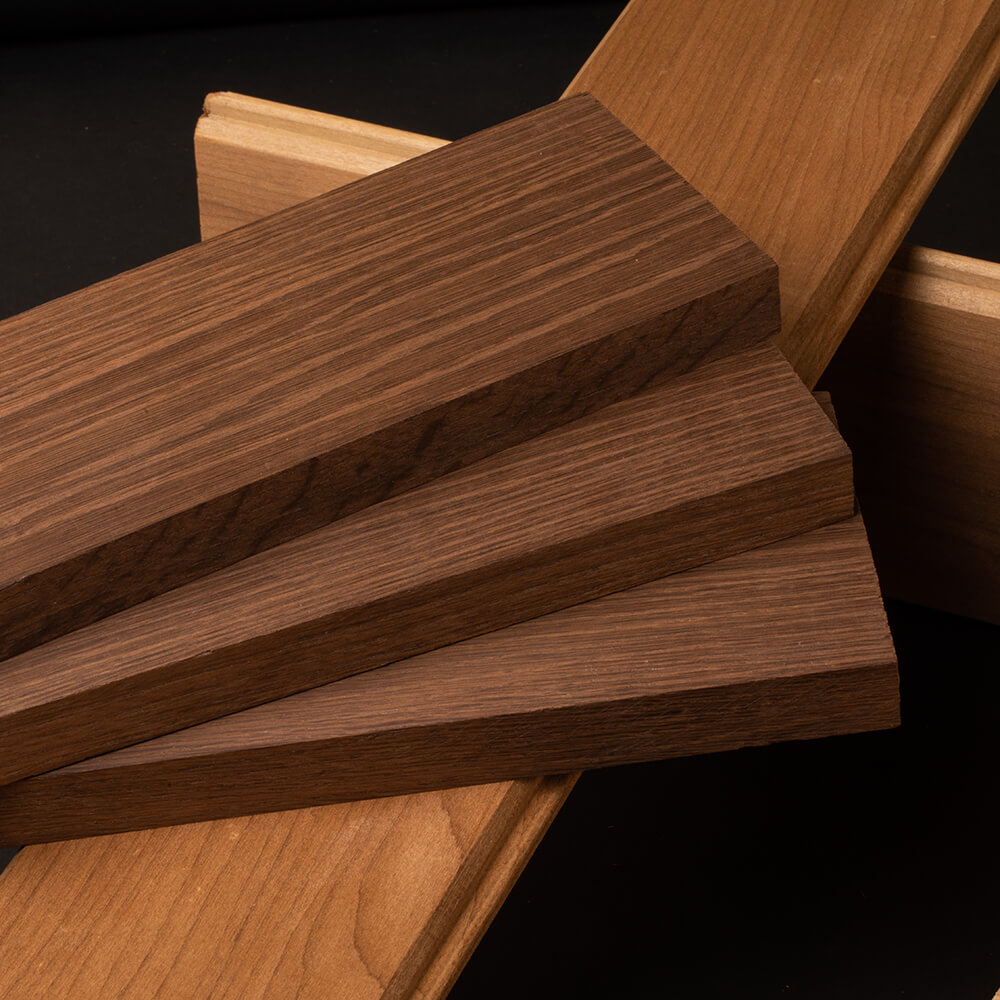ThermalE has a low carbon footprint, lower than tropical hardwoods.
In addition to all of the sustainability benefits of ThermalE lumber, North American sourcing also reduces the carbon footprint by limiting the need for multiple transportation transfers. Eliminating steps that require separate trucking and locomotive shipping reduces the carbon released.
In addition, hardwood lumber stores carbon in the wood, reducing the carbon in the air. The carbon stays trapped as long as the lumber exists. Finally, since sustainability means growing at least as much wood as we are cutting down, additional carbon is removed from the atmosphere as additional trees are grown to support sustainability practices.

ThermalE modification is entirely chemical-free using only heat and steam.
We modify our wood using only heat, steam, and our team of experts. No harsh chemicals, preservatives, or plastics are ever used in manufacturing thermally modified wood.
The thermal modification process is 100% chemical and additive free, making ThermalE products totally safe for all environmentally sensitive usages.

Thermally modified wood may be the first truly green lumber resource that performs better, and costs less than the alternative wood species and substitute products developed to replace wood.
Standard Maintenance Recommendations for Thermally Modified Lumber
Working with Thermally Modified Wood
Performance of thermally modified wood differs from non-thermally modified wood in some ways. Thermally modified wood can be more brittle to work with. Sharp tools and knives are recommended for any machining of thermally modified lumber. Planing and sanding are easily done with good surface quality. Due to the stabilizing nature of thermal modification, any further manufacturing or cutting of thermally modified wood will have very minimal distortion of any kind and will remain very stable.
The Janka hardness of thermally modified wood is directly correlated to the wood species.

Thermally Modified Wood Exterior Maintenance Recommendations
Storage
Thermally modified wood can be stored in a dry place with no special need for controlled climate systems. Bundles should be stored flat with supports sufficient to avoid bending, with packs stored off the ground.
Machining
Wood machining techniques can be carried out with regular tools and established working practices, including sawing, planing, milling, drilling, sanding, and turning. Some thermally modified wood species such as oak and ash do benefit from predrilling. To achieve the best results with all thermally modified material use well sharpened hard metal blades.
Gluing / Adhesives
Thermally modified wood is a material that has been altered at a cellular level, resulting in a fundamental change in how glues and adhesives will perform with all thermally modified wood. Water-based glues, such as PCVA, require longer compression and drying time, and should contain a high proportion of solid material. High compression pressures should be avoided with gluing thermally modified wood. Chemically hardened glues can be used in the same way as raw lumber (such as polyurethane, glues with polyvinyl acetate and hardener, resorcinol phenol, and melamine resin). When gluing thermally modified wood, the glue according to the manufacturer’s specific instructions must always be referred to.
For attachment between thermally modified wood and non-thermally modified wood careful preparation of both woods is necessary.
Screwing & Nailing
Thermal modification may reduce the splitting strength of wood. The use of self-tapping or countersinking screws or pre-drilling holes should be done to avoid cracking of the material.
Stainless steel is highly recommended when nailing thermally modified wood. Nails should be sunk to a depth of approximately 1/16”. For best results, use a compressed air nail gun with an adjustable nailing depth. Attention should be paid to the correct pressure and nailer’s drive length. Using a manual hammer may increase the risk of splitting due to accidental hammer contact with wood.
Planing & Milling
Best planing and milling results are achieved with carbide-tipped cutters. Planing of thermally modified wood can be made using standard planing machines which provide good surface quality. Tear out can be avoided by milling with the grain of the wood.
Health and Safety
There is no major difference in health and safety considerations for thermally modified wood as compared to untreated lumber. The only detectable differences are the smell of the material and the dust generated in processing.
All thermally modified wood has a faint smoke-like smell when working. This smell is the result of the thermal modification process and is inert.
Persons who are exposed to the dust on a daily basis should protect themselves with dust masks. When gluing or painting, always follow the paint or adhesive manufacturers’ specific health and safety instructions.
Handling of residual and discarded products
When not glued or painted, thermally modified wood waste can be handled like any other untreated wood waste. Thermally modified wood can be burned. Pelletizing and briquetting is possible, if a mixture with normal sawdust is used.





